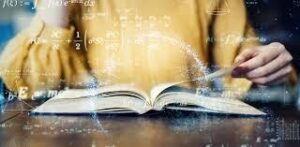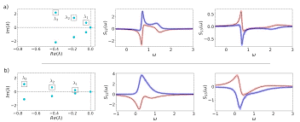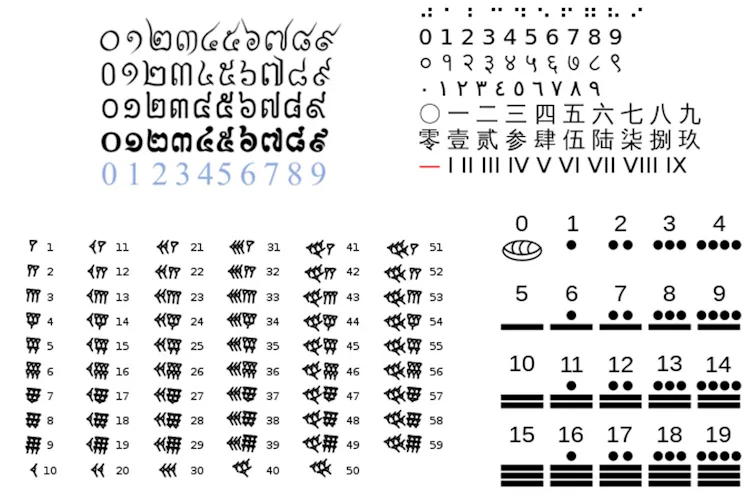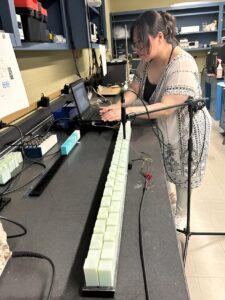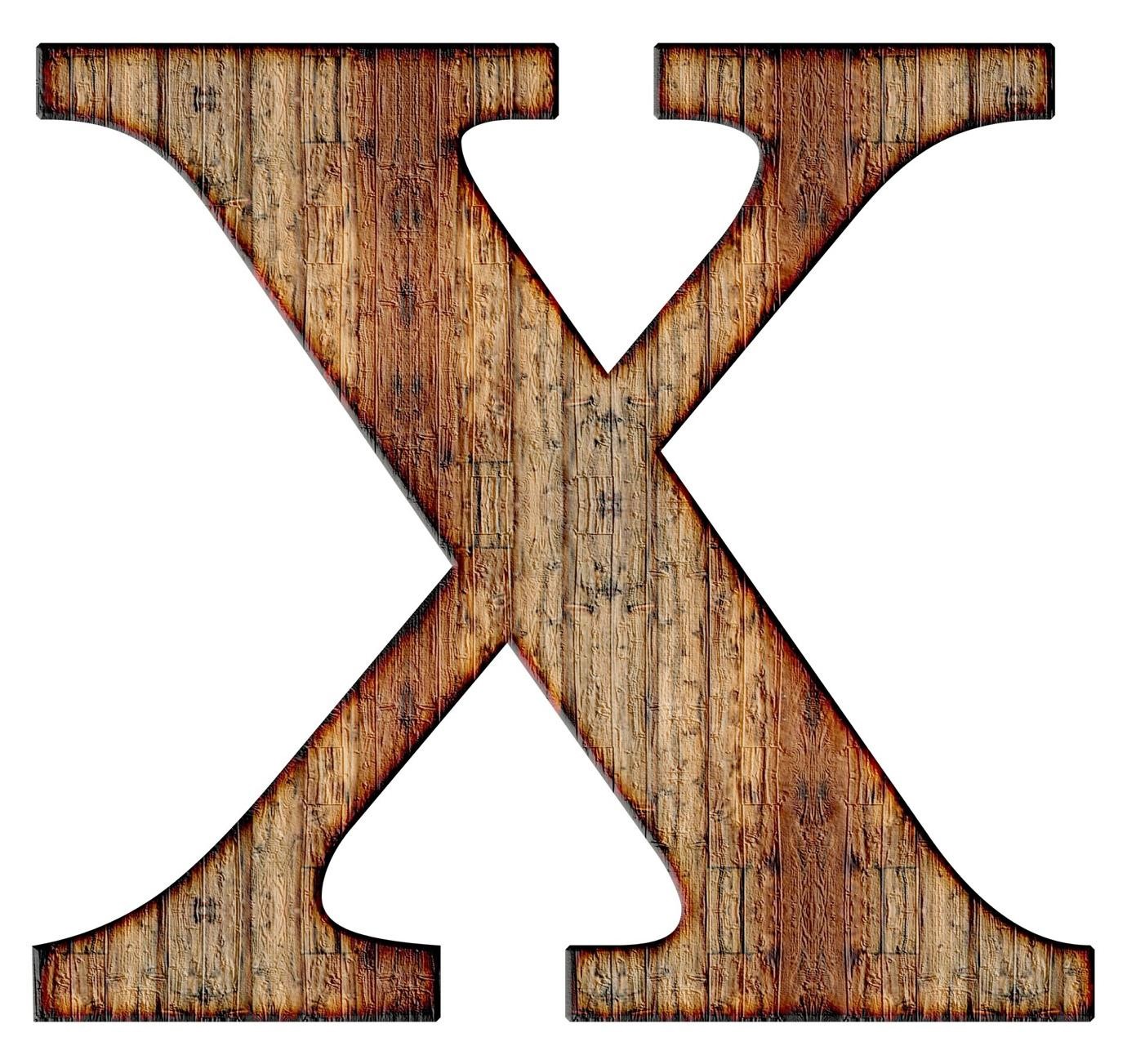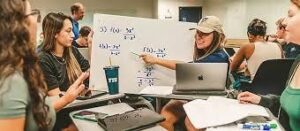
Calculus is the study of change. Calculus teaching methods, however, have changed little in recent decades. Now, FIU research shows a new model could improve calculus instruction nationwide.
A study published in Science shows a reimagined, innovative active learning approach to calculus instruction benefits all students. The model, developed at FIU, focuses on mastering different ways of thinking and solving problems—skills that are important beyond the classroom.
Rote memorization and large lecture halls have been replaced by active learning classrooms where students work collaboratively to solve problems. The result is greater learning outcomes and an understanding of calculus concepts, as well as better grades than their peers in traditional, lecture-based classes, according to the research.
“This large-scale study shows us what we’ve been seeing at FIU: If you put students in an interactive, active learning environment, they can and do learn significantly more, developing the ‘habits of mind’ they’ll use for a long time and throughout their careers,” said Laird Kramer, the study’s lead author and founding director of FIU’s STEM Transformation Institute.
Kramer and a team from the STEM Transformation Institute followed 811 FIU undergraduates enrolled in different sections of the same Calculus I course with two very different teaching methods—half of the sections were traditional lecture-based classes and the other half employed the evidence-based active learning model developed at FIU.
To see which group retained more information and better understood calculus concepts, the students were tested at the end of the course. Active learning classes had a higher average pass rate of 11%. Apply that to the roughly 300,000 students taking calculus each year in the U.S. and it could mean an additional 33,000 students passing calculus and getting closer to a STEM degree and career.
The active learning group’s learning gains cut across majors and academic paths and included underrepresented groups in STEM. This finding is significant since less than half of students entering universities as STEM majors actually graduate with a STEM degree. Failing calculus is a major reason.
“Calculus remains a critical step on the pathway to numerous STEM careers in engineering and the sciences,” said Michael J. Ferrara, Program Director at NSF Directorate of STEM Education. “This study makes a rigorous and compelling argument that active, student-centered calculus courses result in significantly greater learning and success outcomes when compared to more traditional approaches.
“These benefits are particularly profound for students from populations that have traditionally been underrepresented in the STEM workforce, which underscores how a more modern approach to teaching mathematics is critical as we look to nurture the full spectrum of STEM talent across the nation.”
Improving teaching methods in calculus means students are more likely to stay on track and stick with a STEM program. That, in turn, helps graduate more STEM professionals.
“Student success is FIU’s priority, as demonstrated by the development and successful implementation of active learning strategies in our calculus courses,” FIU Executive Vice President and Provost Elizabeth M. Béjar said. “This research builds on years of studying the positive impacts of active learning in the classroom to ensure students have the knowledge and skills they need to move through their STEM courses with confidence.”
FIU has led collaborative initiatives through its nationally recognized STEM Transformation Institute to improve learning. Research has informed the development and introduction of innovative instructional strategies for calculus, mathematics and other sciences and engineering. That’s led to significant increases in four-year graduation rates for STEM majors at FIU.
FIU’s active learning model is just as challenging and rigorous as a traditional lecture style, but more effective for the often incredibly complex process of learning and provides opportunities for different parts of the brain to engage and store information. Students learn by doing. Class time is collaboration time. In small groups, students work face-to-face developing and testing hypotheses. The goal is to learn to ask the right questions and look at problems in new ways—meaning, they think and act like mathematicians, engineers, scientists, doctors.
“This research began as an experiment to see if we could identify new ways of teaching coursework and give students an alternative way of learning the rigorous content in calculus,” said Mike Heithaus, executive dean of the College of Arts, Sciences & Education. “Based on prior research, we felt confident the active learning method would be effective. But even we were surprised at how much better students did in the active learning sections versus the traditional. As soon as we got these results, we began implementing these methods throughout our entire math curriculum.”
For more such insights, log into our website https://international-maths-challenge.com
Credit of the article given to Angela Nicoletti, Florida International University



